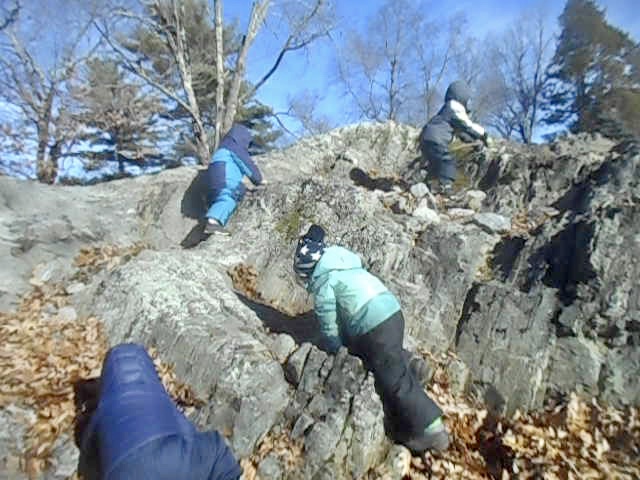We’ve been taking small groups out every day, usually four children, usually heading out to the sculpture park and occasionally the museum. There are several reasons for this:
• It brings down the volume and activity level in the classroom. Once the noise level starts to rise, children vocalize louder to be heard and to hear themselves. Much like having trouble maintaining a conversation in a loud restaurant!
• LNS is a place-based school; learning occurs “in the context of place… it is relevant to children’s daily lives and experiences.” (NAEYC) Greater familiarity brings greater comfort, and that’s when we begin creating our own stories around the spaces and landmarks, and make sense of our world, but also create a class culture, because we all share those stories. We know which sculpture is like popcorn, which we can hide in, which hills and rocks we can slide down, we are speaking the same language.
• And we get exercise and fresh air!
Sometimes we take the same group out two days in a row so that they can continue to share stories and further bond. This week Camden, William, Ferdinand and Augie were out Monday and Tuesday (with Diane and Mark, respectively). We have spoken about Visibility as an umbrella topic this year, in particular, how children make themselves visible to each other, and on Tuesday this was particularly evident.
It is often our goal to let the children explore the park until they find a place to “settle” – where they really engage in play together, and on Tuesday that place was the craggy rocks to the left and back of the Eve Celebrant sculpture. Suddenly they were on a space ship. Some were captains, and all crawled across the rocks: “3, 2, 1, blast off…” “We blasted off!” “We’re at Mars now. Getting off… I’m a mountain climber.” “Look at me at the very top.” They climbed up and slid down, enjoying the challenge, showing off their capability: “Look at me!” They became monsters, some were stick-eating monsters, others were leaf-eating monsters, they offered food to each other.
We see children:
Relating to each other in a range of roles, sharing power in a group, and incorporating each others’ ideas.
Respecting one’s self and others as well.
Developing strategies for entering play, such as through storytelling.
Developing movement skills, strength and coordination.
Demonstrating a growing awareness of the natural environment
Persevering
Every group is different, depending on the day or the make up of the group, but all are interested in connecting with each other, sharing their ideas, solving social and physical problems and challenging themselves.


